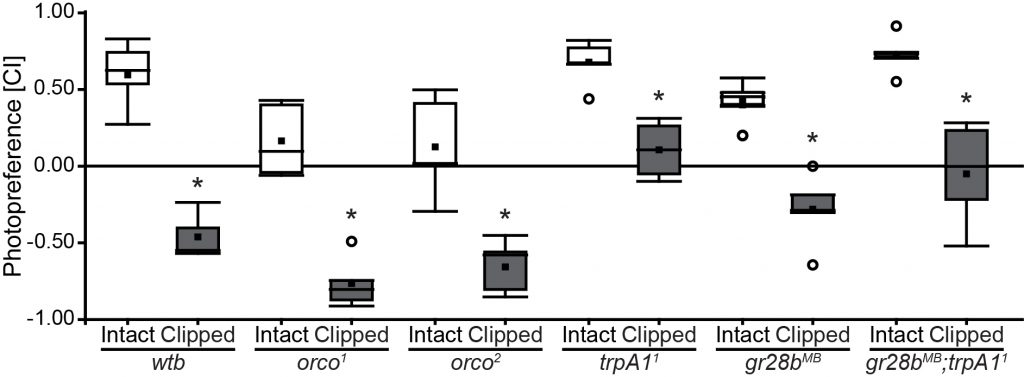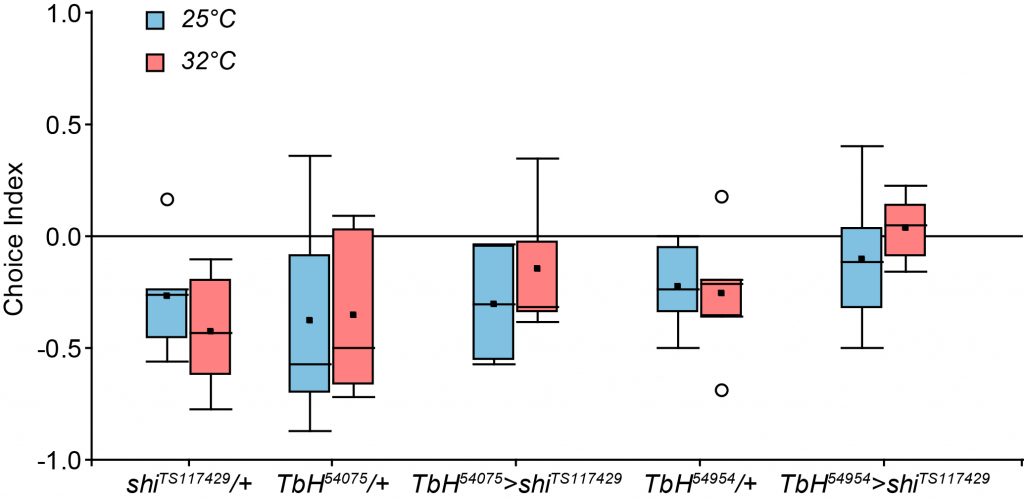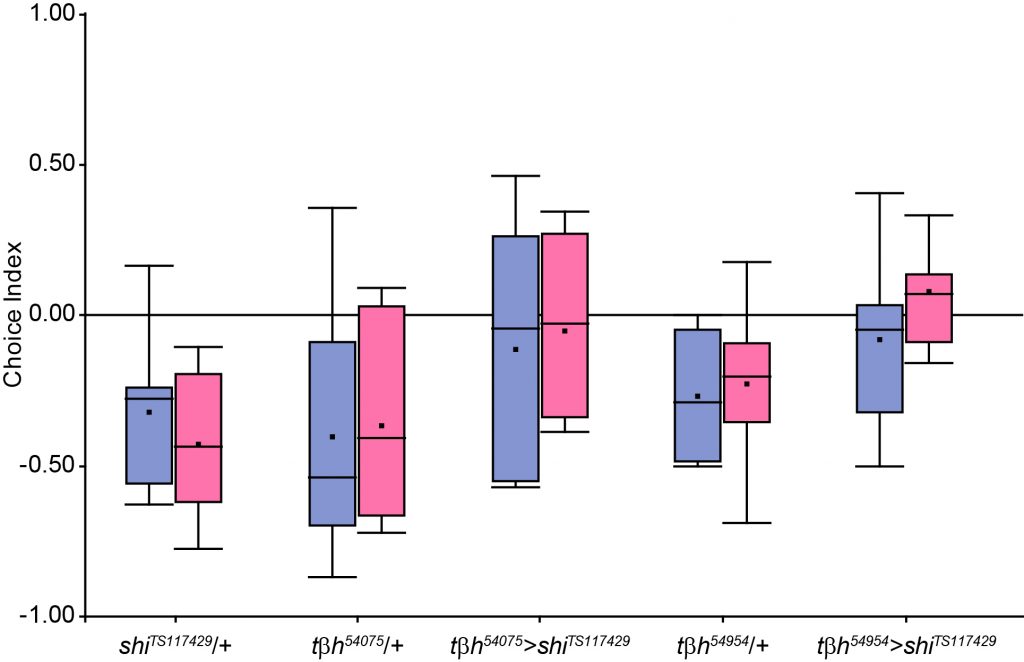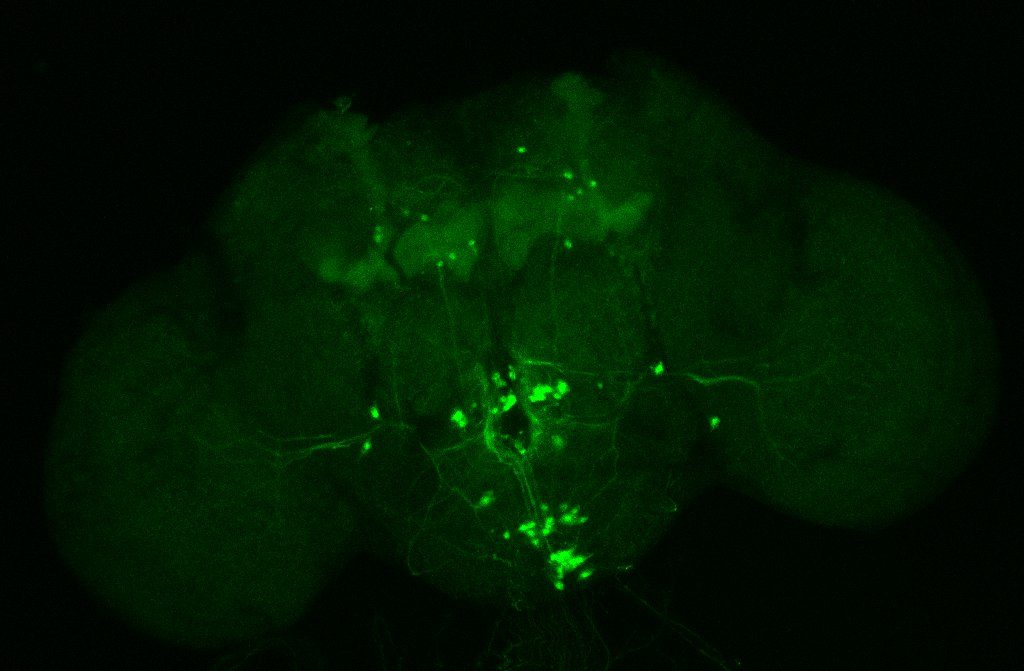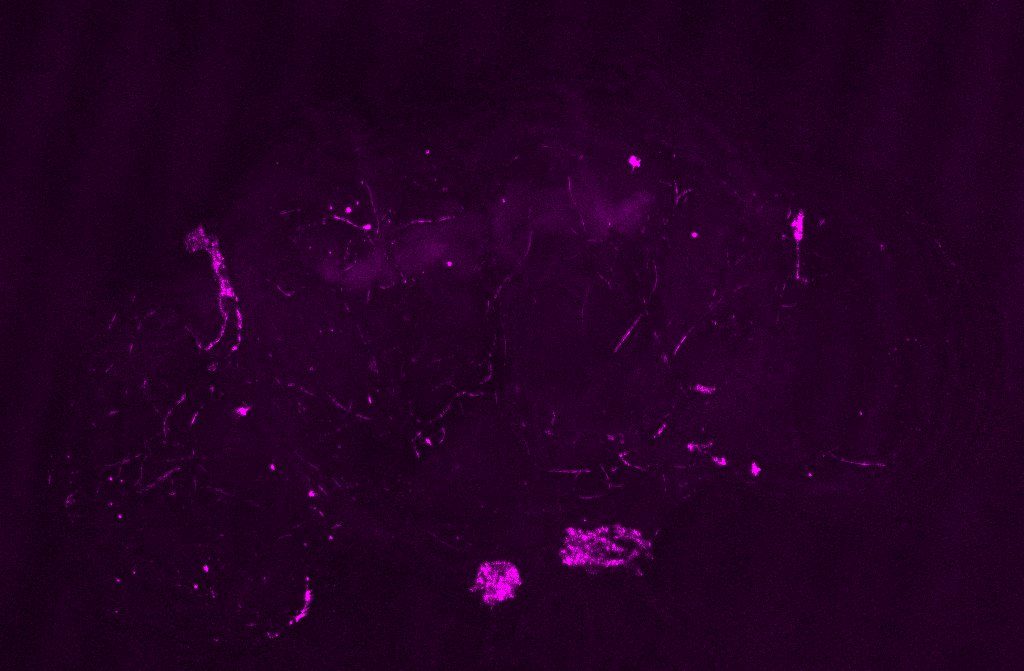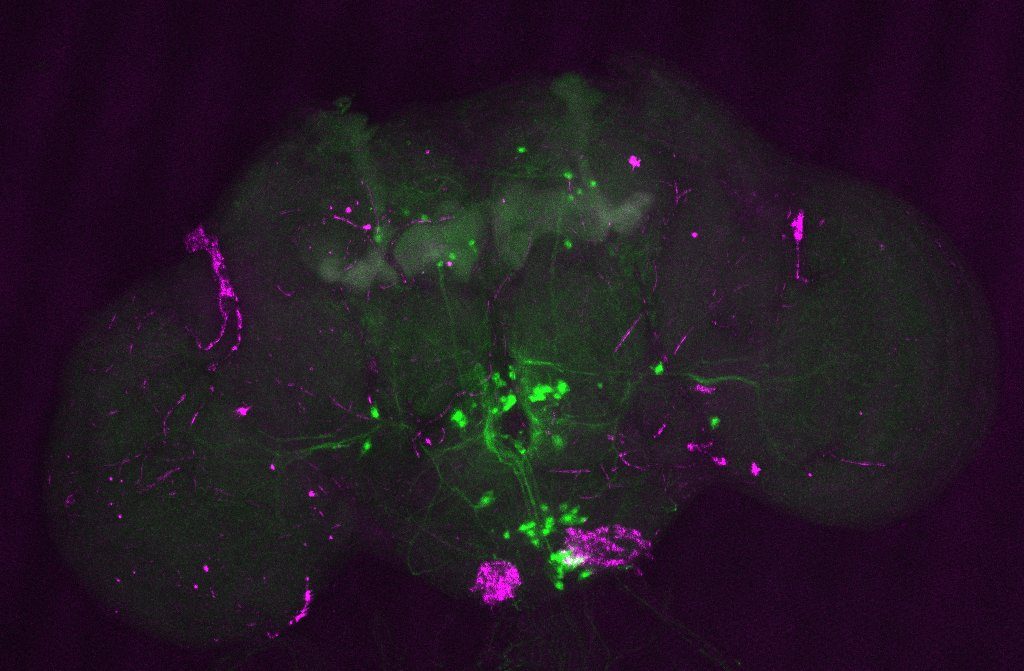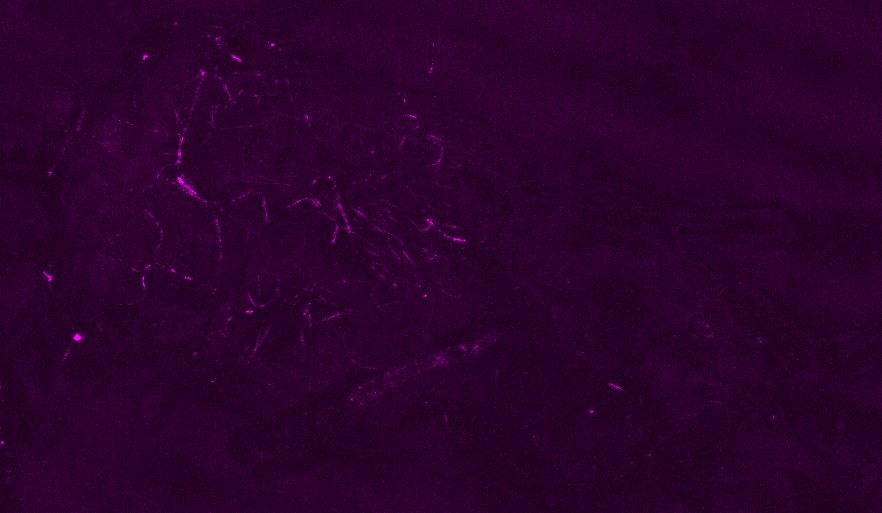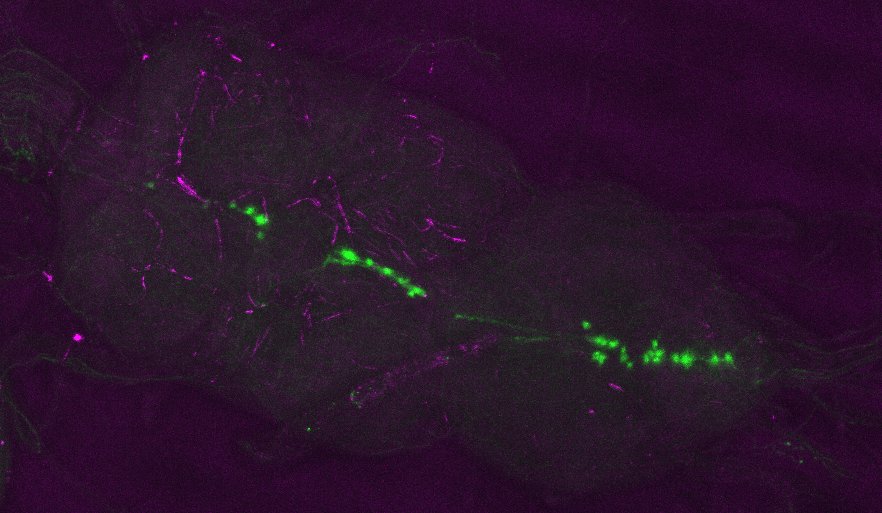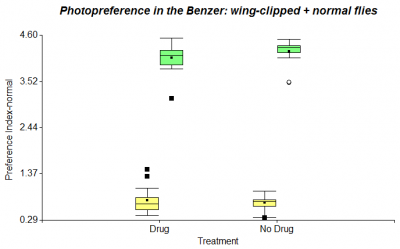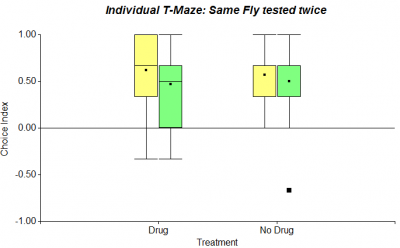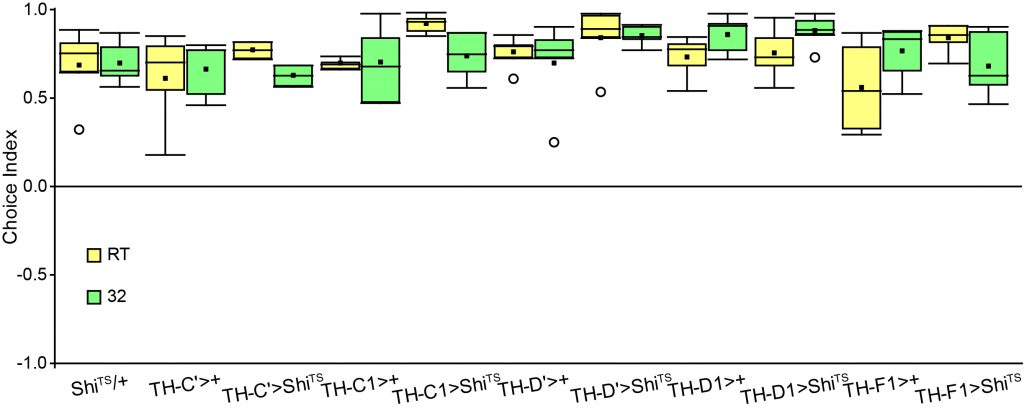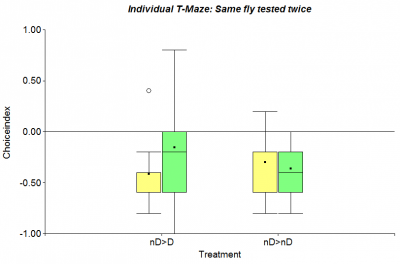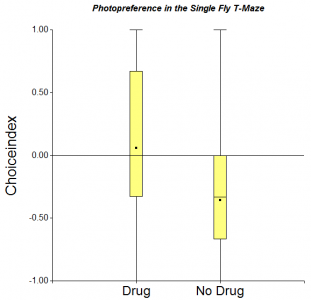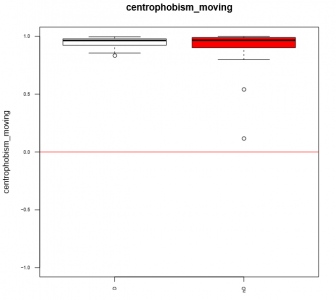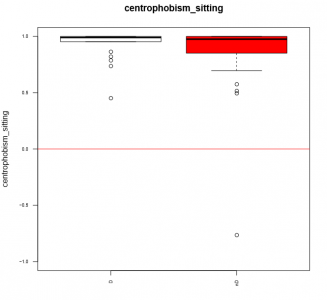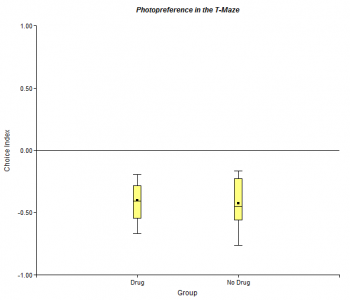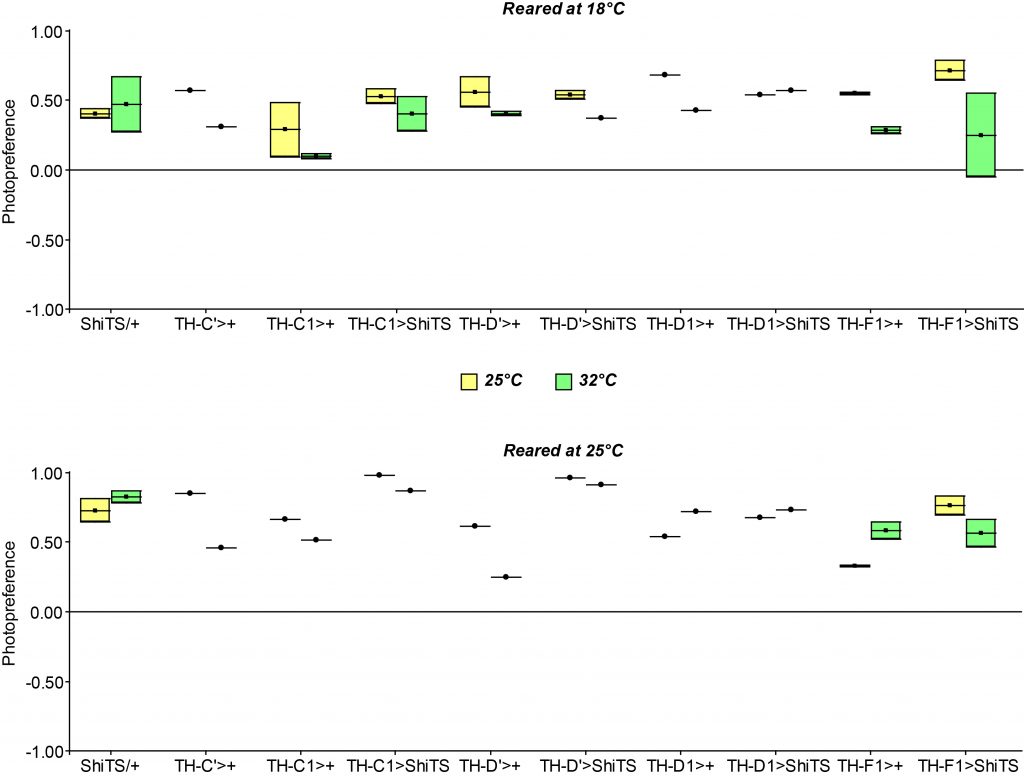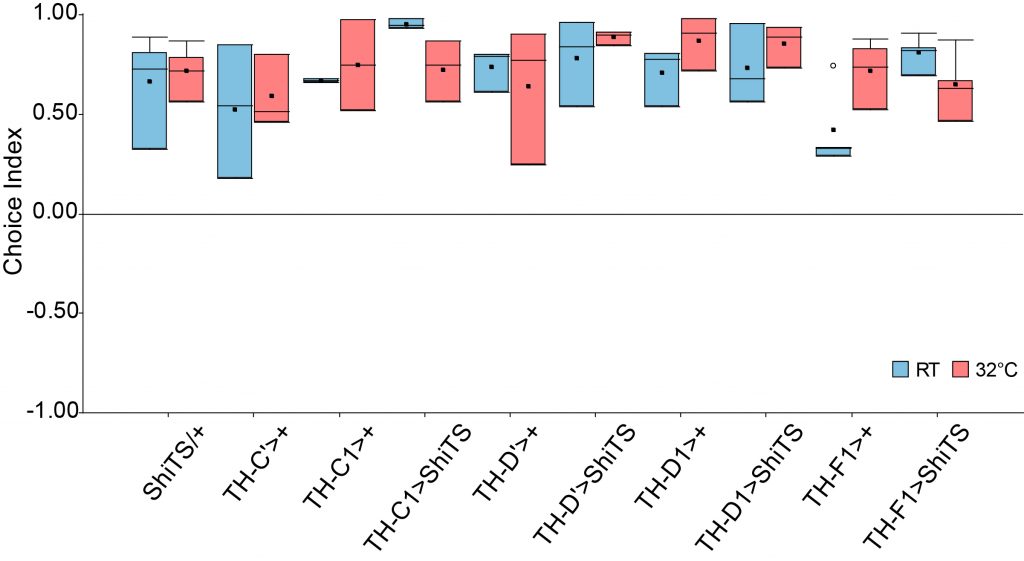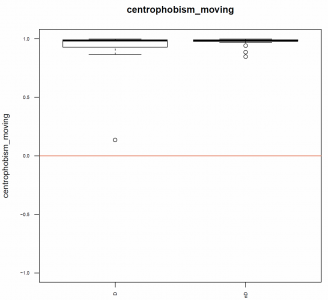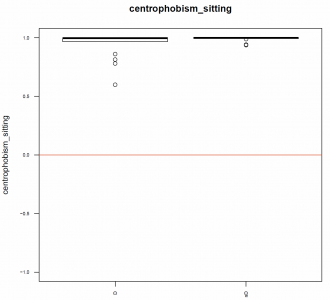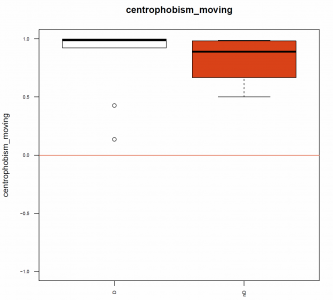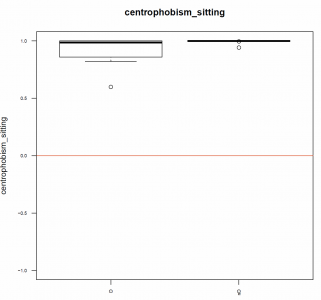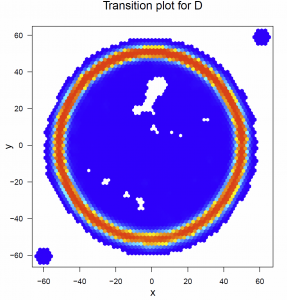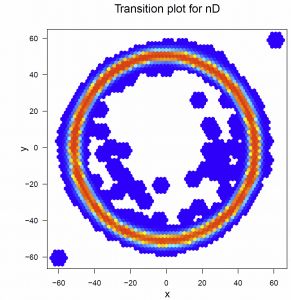Sensory input and photopreference (update)
on Monday, October 17th, 2016 2:22 | by Axel Gorostiza
This is an update from my previous post were I tested the wing-clipping effect in several sensory mutants. This is the final graph.
Category: wing clipping | No Comments
TbH-LexA: OA in photopreference (update)
on Monday, September 12th, 2016 2:06 | by Axel Gorostiza
The following plot shows the photopreference of two LexA lines presumably labeling TbH neurons. Only wing-clipped flies are shown.
26-09-2016, new experiments added.
Category: Biogenic Amines, wing clipping | No Comments
TbH QF system
on Monday, September 12th, 2016 1:37 | by Axel Gorostiza
In order to study the role of OA and DA in photopreference I am constantly looking for new drivers that label subpopulations of these groups. I recently found a TbH driver from the QF system, and wanted to know how representative of the TDC2-G4 neurons was. I have established a QUAS-mCherry;TbH-QFs line (Magenta) and crossed it with TDC2-G4;UAS-GFP (Green). In both cases, what is shown is the endogenous expression.
Category: Anatomy, Biogenic Amines, wing clipping | No Comments
Update: Altering Photopreference of Drosophila with Diazepam
on Monday, August 8th, 2016 1:53 | by Lena Matzeder
In my last post I presented results of testing wing-clipped flies in the Benzer Paradigm, where half of them were fed with Diazepam. I repeated this experiment, but added 40 normal flies to 40 wing-clipped flies. However the following figure doesn’t show any increase of photopreference in Diazepam treated flies.
To complement the individual T-Maze experiment, that I started recently with wing-clipped flies, I performed it with normal flies as well (n=20). The procedure was repeated 10 times. While the first figure in the following shows all 10 choices, the second one only refers to the first 6 choices.
Category: wing clipping | No Comments
Update: DA and OA in photopreference
on Monday, August 1st, 2016 2:24 | by Axel Gorostiza
This is an update of the T-maze experiments for flies with OA and DA neurons manipulated.
- TH-G4s x shiTS. Except for 2 groups the N is at least 5.
2. TbH-lexAs x shiTS. Last year I tried to complete this experiment and several problems appear. Now I am starting to do it again and it seams that it works. N=4.
3. I am starting to test the same TbH lines crossed to TrpA1. So far, not much to say.
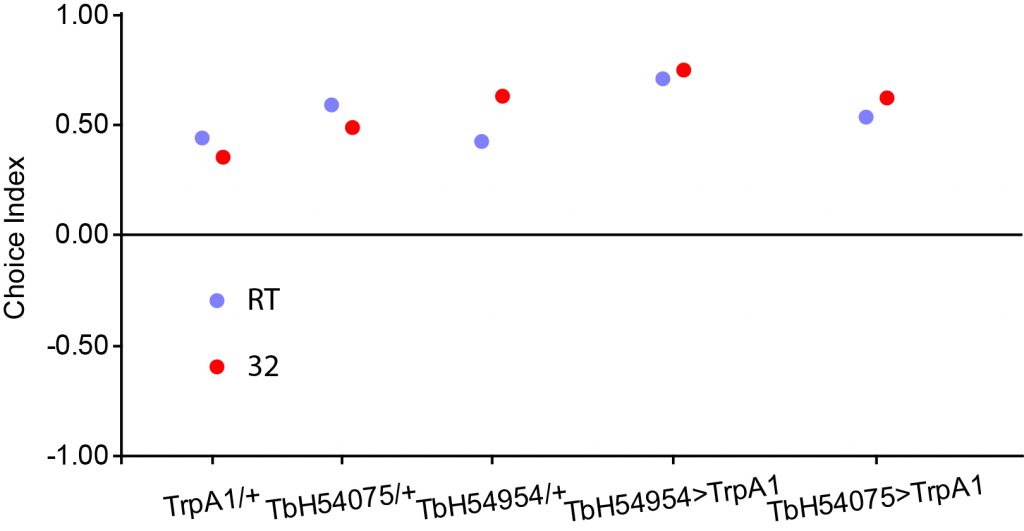
Category: Biogenic Amines, wing clipping | No Comments
Update: Altering Photopreference of Drosophila with Diazepam
on Monday, August 1st, 2016 10:45 | by Lena Matzeder
After testing wing-clipped individual flies in the Single Fly T-Maze, that is described in my last post, I reran the experiment changing two things in the setup: Firstly the procedure on each fly was repeated 10 times instead of only 6 and secondly each fly was tested twice, which results in a direct comparison of the same organism with and without the drug. On the first day of the experiment (yellow bar) all of them were fed with the yeast-solution containing 10% ethanol and on the second day (green bar) the same flies were tested again, but half of them got the 5 mM Diazepam treatment. Looking at the following figure (n=23) the control group (nD>nD) shows a similar behavior in both days, but compared to the Diazepam treated flies (nD>D) there is a perceivable increase in photopreference.
Besides the T-maze I started testing flies using the Benzer Paradigm. In this experiment they don’t have the options of light and darkness, but they can choose between light and less light. They can either go towards the light and transfer to another vial or just stay where they are. I started testing only wing-clipped flies (n = 10) with a groupsize of about 50 flies, but I will test groups of wing-clipped and normal flies taken together in the same vial as well.
The Preference Index is calculated by
PI = ((#F5×5)+(#F4×4)+(#F3×3)+(#F2×2)+(#F1×1)+(#F0×0)) / (#FT )
Category: wing clipping | No Comments
Altering Photopreference of Drosophila with Diazepam
on Friday, July 15th, 2016 2:27 | by Lena Matzeder
In my last post I presented results of testing Diazepam treated wingless flies in the T-Maze with a groupsize of about 50 flies, which showed nearly no effect. To see if the flies in the group tests maybe distract each other e.g. by making loud noises, I built a Single Fly T-Maze. The arms of the T-Maze have a length of 32 mm and a diameter of 6 mm. They end up in vials, which have a length of 60 mm and a diameteder of 10 mm. The fly gets blown in from below, which forces them to decide immediately (fast Phototaxis) between one side, that is lit from above, and one side, that is darkened with aluminium foil. The samplesize was 30 flies, where each fly was tested 6 times.
The Choice Index was calculated by
[(Light choices)*1 + (Dark choices)*(-1)] / (Total of choices)
1 = all flies prefer the light
-1 = all flies prefer the dark
Although the measurements are very distributed, the Boxplot shows increased Photopreference in wingless Diazepam treated flies. Testing each fly more than 6 times maybe could improve these results and decrease the high distribution.
Category: wing clipping | No Comments
Update: Does Diazepam influence anxiety behaviors in Drosophila?
on Monday, July 11th, 2016 1:55 | by Lena Matzeder
To find out, if there is a small effect of the Diazepam treatment, we tried to increase the anxiety by isolating the flies for 3 days before the behavioral test. 22 flies were tested, but similar to my results from my last post there is not a big difference in centrophobism moving and sitting. But surprisingly the control group showed a higher locomotion compared to the Diazepam treated flies.
The following diagram shows the behavior of Diazepam treated flies in the T-Maze, where they have to choose between light and dark. It is already known, that flies with clipped wings prefer the dark, so we expected to have an opposite effect, if we treat them with anxiolytics like Diazepam. We used a 5 mM Diazepam solution, the groupsize was about 50 flies and the experiment was repeated 16 times.
1 = all flies prefer the light
-1 = all flies prefer the dark
The treatment has nearly no effect on the photopreference, although the choice index of the drug treated flies is slightly more positive compared to the control group, but it’s in the negative range, which means most of them are still more likely to go to the dark.
Category: wing clipping | 1 Comment
Photopreference TH subgroups (protocol changes & new data)
on Monday, June 27th, 2016 2:48 | by Axel Gorostiza
Since I finished the first round of the screen to find out the DA substrate of the photopreference, I was testing the candidate lines in a WTB background. I had some unexpected results with the controls, so now I’m continuing the experiments, while adjusting some things to understand the problem.
In this case, I reared and tested the flies as before (reared at 18°C, and tested at 25 & 32 °C in consecutive days). But, I also made a copy of those crosses and placed them at 25 during development. After that I moved them to 18°C until the experiment was done.
Update (25°C):
Category: wing clipping | No Comments
Update: Does Diazepam influence anxiety behaviors in Drosophila?
on Monday, June 20th, 2016 9:52 | by Lena Matzeder
In an older post I tried to replicate an experiment published recently in “Ancient Anxiety Pathways Influence Drosophila Defense Behaviors“. My results showed a very tiny effect of the Diazepam treatment, so I decided to create a smaller arena, which was more similar to the size they worked with in the paper. I used a single well of a 24 well plate, which had a diameter of 16mm and a height of 7mm.
(D = Diazepam; nD = no Diazepam)
In the diagrams above (17 flies of each) I only included moving flies in the analysis, because some flies barely moved during the hole experiment, which had a huge influence in the results of centrophobism moving. The difference can be seen in the graphs below, which represents 10 tested flies of each group, which was only a part of the hole setup, where i also included the flies, which didn’t move.
The smaller size of the arena resulted in a smaller transition plot, which was too tiny to be analyzed. Therefore we had to set the diameter back to the original size of the arena in the Buridan, which was 115 mm, to get the following diagrams.
In the transition plots (17 flies of each) it didn’t change anything, if we left out the flies, which didn’t move, or not. Nevertheless they clearly show, that the flies without Diazepam seemed to avoid the center, while diazepam treated flies didn’t.
Category: wing clipping | No Comments
